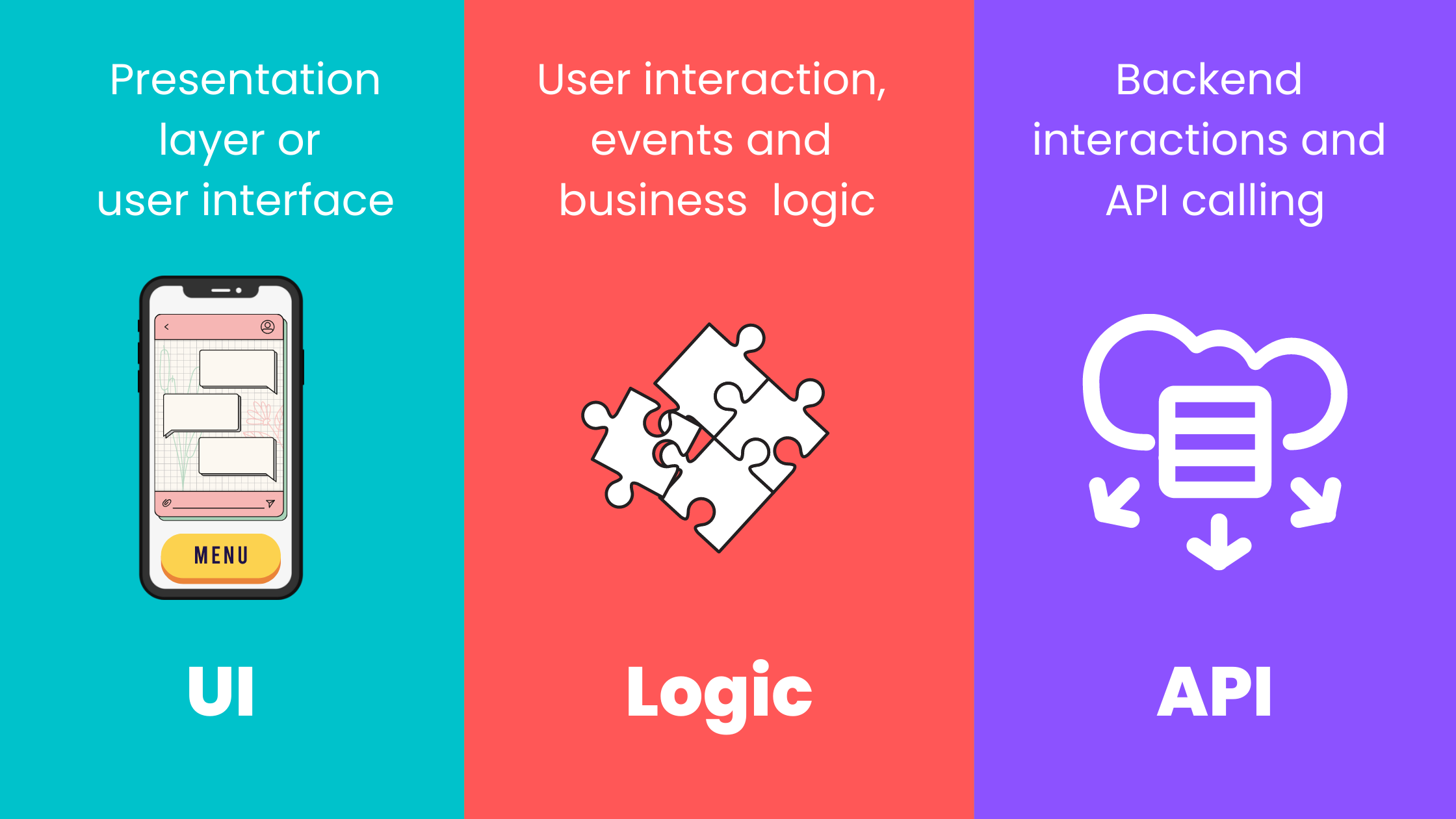To get started with this project, we'll use Expo. Open a terminal and run the following command inside a directory of your choice:
expo init rn-project-structureAlternatively, you can use create-expo-app to set up a new Expo and React Native project:
yarn create expo-app --template blank AwesomeProject
cd AwesomeProject
yarn expo startFor more details on creating Expo projects, check out the create-expo-app documentation.
Breaking down your project into manageable layers can help maintain a clean and organized codebase. Here is a common structure you can use:
This layer includes all the components and UI elements that the user interacts with. It covers elements like buttons, text, popups, and other visual components.
The Logic Layer handles the core business logic of your application. It manages all the events, interactions, and operations that take place between the UI and the API layers.
The API Layer is responsible for communication with back-end services. It handles API calls to servers or external web services and processes responses to be used by the Logic Layer.
Here’s a suggested folder structure for a React Native project:
/AwesomeProject
|--/assets
|--/components
| /Button
| /Header
|--/screens
| /Home
| /Details
|--/services
| /api
|--/utils
|--/hooks
|--/context
| App.js
| app.json
| package.json
- /assets: Contains static assets like images and fonts.
- /components: Reusable UI components.
- /screens: Different screens or views in the application.
- /services: API services and utilities.
- /utils: Utility functions and helpers.
- /hooks: Custom React hooks.
- /context: React context providers and state management.
- Modularity: Keep components small and focused on a single responsibility.
- Separation of Concerns: Maintain a clear separation between UI, business logic, and API interactions.
- Reusability: Create reusable components and hooks to reduce code duplication.
- Consistent Naming: Use consistent naming conventions for files and folders to enhance readability.
By following these best practices, you'll create a well-organized and maintainable React Native project. Happy coding!

